Txema Novelo pays a great deal of attention to the space between the divine and the quotidian. His current exhibition Emerald, Sapphire and Gold is guided by the anthems preached in alternative rock music, the mysticism of religion and altars that inspire prayer to a higher power- whether it’s to a deity, philosopher or a divine personal practice.
Central to my work is the concept of Joy Division/ Sad Divine a play on the basic Gnostic principle that humans are naturally divine beings yet divided from the spiritual realm by their own physical creation. Logically, this pairing would be Sad Division/ Joy Divine but through its reversal, I try to bring this gnosis with my medium of choice — rock ‘n’ roll — and at the same time throwing the principle’s core assumption into critical perspective.
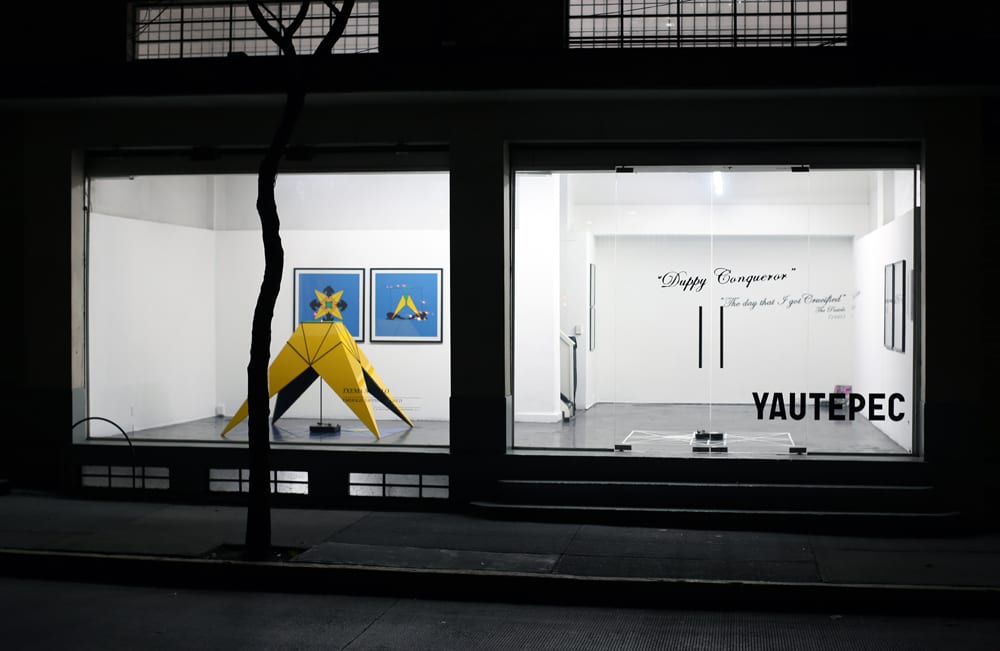
My love for you baby, is like a roller coaster
It goes up, down, anyway you want it baby
— E.S.G., My Love for You
For the Gnostics, myth was a medium. It was not a literal truth, but a tool for attaining divine knowledge through personal religious experience, understanding, and transcendence. For me, these myths are algorithms, and as with any algorithm one can change the variables. In this way, through remapping biblical scriptures upon the mythologies of twentieth century popular music and culture, I’m trying to reintroduce a sense of the sacred into contemporary art.
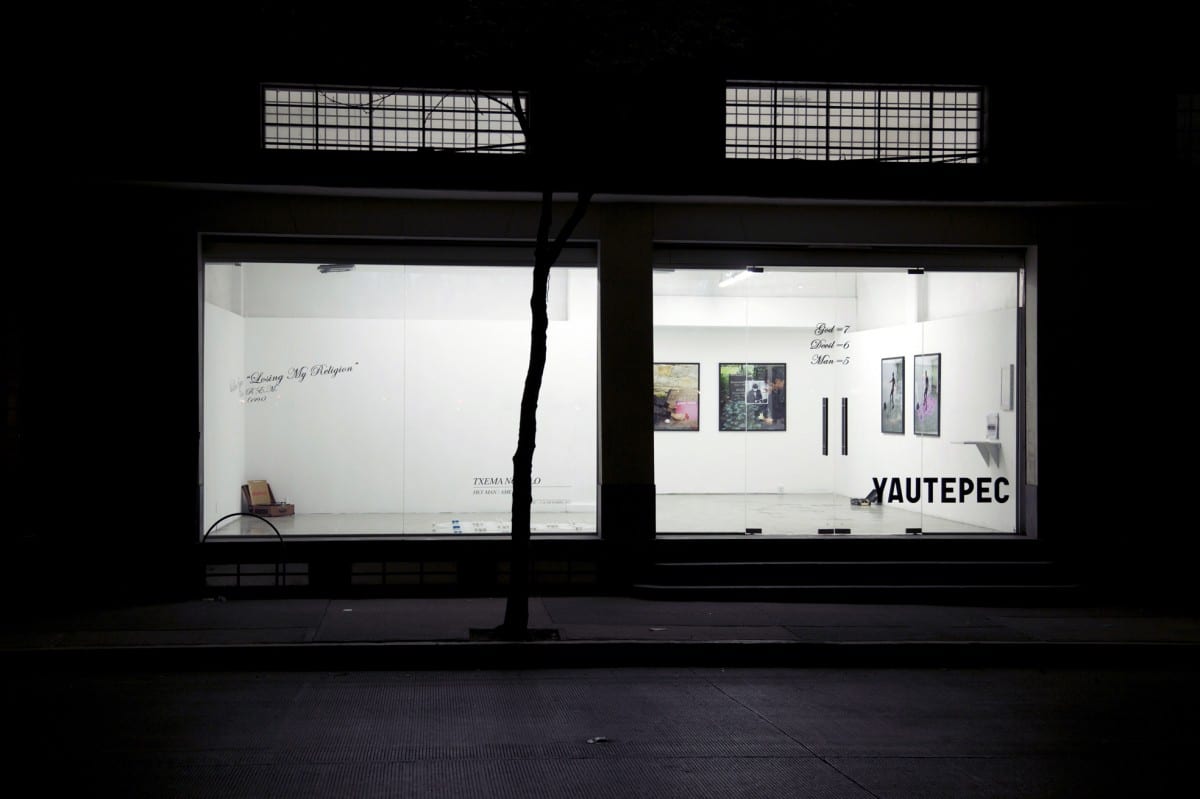
The idea here is to mirror my recent solo show with the previous, in order to reveal certain methodologies within my work. The show before Emerald, Sapphire and Gold was titled Hey Man/ Amen which was borrowed from a song by the minimalist psych band, Spacemen 3. The chorus of the song Amen has regularly been confused by listeners as being, in fact, “Hey Man.”
This blurred liminal—or limbo—space between the divine and the quotidian is a territory that I pay a lot of attention to.
Much of the work featured in this exhibition was conceived and developed during my 2011 fellowship at Halle 14—an independent arts center in Leipzig, Germany—in response to the theme, “What Happened to God?” Working in the city in which Friedrich Nietzsche attended university and only a short distance from the town in which the Protestant movement began, Leipzig was an incredibly symbolic place to begin my own research.
The point of departure for this show was the biblical legend of Noah’s three surviving sons after the great flood—Ham, Shem, and Japheth—fathers of the southern (African), middle (Semitic), and northern (European) peoples, respectively.
Acknowledging that rock ‘n’ roll (which may be taken here as a loose umbrella term for postwar popular music) has, since its beginnings, assumed a religious character for its devotees—and in many cases, superseded the hold of Judeo-Christian beliefs—I went on to identify three twentieth-century parallels to the sons of Noah: the iconic figures of Bob Marley (Ham), Bob Dylan (Shem), and David Bowie (Japheth). I like the idea of bringing these totemic — but perhaps washed-up (to some) figures into my work, as new religious icons.

At the entrance of the recent Emerald, Sapphire and Gold exhibition is the work Duppy Conqueror — a vinyl text placed upon the glass doors of the gallery — referencing one of my favorite phrases coined by Lee Scratch Perry and immortalized in song by Bob Marley & The Wailers, signifying one who defeats the malevolent spirits in this world. As a kid I was very fond of the Final Fantasy video games series, which I realize now uses the idea of divine and divided (good & bad) in the most Nietzschean and Greek senses of the tragic. Nietzsche says in Götzen-Dämmerung that spiritual people tend to live tragic lives. The recent years for me have been, in the most rock ‘n’ roll way, a test for duppy conquering, and this past show was a temple for it.
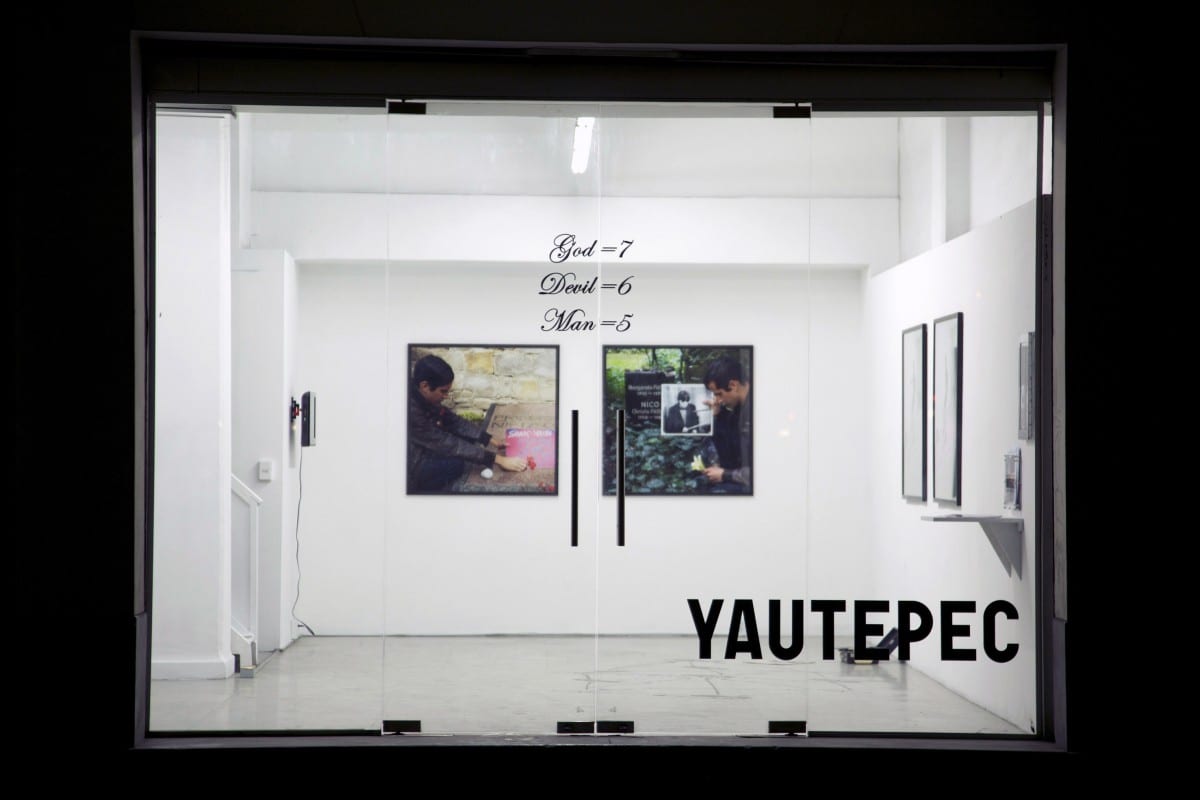
Two years ago, at the entrance of Hey Man / Amen, there was another vinyl work entitled God is Seven with which I tried to suggest an ascendent Kabbalistic categorization for the divine spectrum between man, evil, and divinity. This was an ironical way to relate humanity’s inferiority to the divine by citing The Pixies’ song Monkey Gone to Heaven.

The first thing you see passing through the doors of the gallery is a pair of large installations, ESG The Praying Machine and Bizarre Love Triangle. The Praying Machine is a large pyramidal structure that permits up to four people to kneel prostrate before a turntable playing the self-titled 1981 EP by the genre-defying South Bronx group, ESG, as the smoke of frankincense floats up above their heads. The Praying Machine, like Brion Gysin’s Dream Machine before it, was my attempt to create a gnostic machine that could provide a bridge to a higher, divine mind state. It is based on Matthew 18:19-20 in which Jesus says that “if two of you on Earth agree about anything they ask for, it will be done for them by his Father in Heaven. For where two or three gather in my name, there am I with them.”
Yet as a gnostic machine, it does not require a belief in Jesus but just the use of his literal name, the etymology of which is “the liberator.” It is a liberating device. I was a very obsessed Wax Trax teenager, which eventually led me to the church of Throbbing Gristle, Coil, Current 93, and bands like that. Genesis P. Orridge to me is a new denomination for saints, and an heir to the teachings of Brion Gysin and William S. Burroughs. Currently, I am working on a new piece, where I change the names of the 12 apostles into the names of the rock n’ roll icons that I consider to have brought the “new message” into our times, like Peter will be Peter Kember and John will be Jon Spencer.
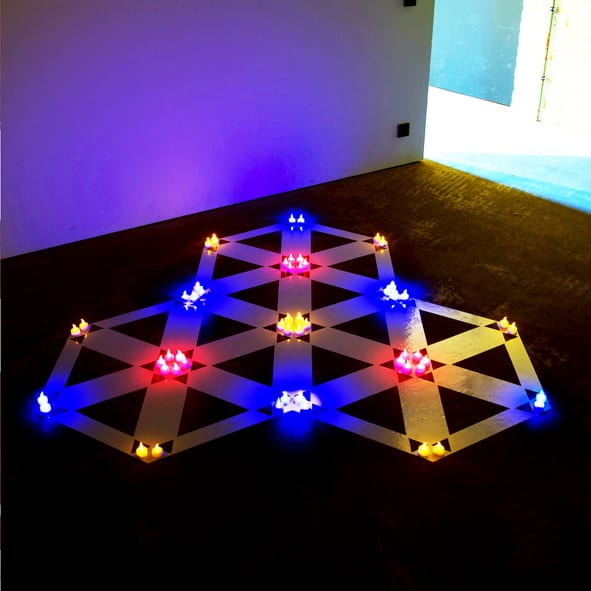
Haile Selassie consisted of three interconnected vinyl hexagons and triangles echoing those in the Star of David, but interlinked and illuminated by candles in cyan, yellow and magenta. I used these primary colors to build the color spectrum, which I linked back to Noah’s rainbow and pact with God after the Flood, and his three sons Ham, Japheth and Shem (the new people of the new world). Moreover, the name Haile Selassie, emperor and Rastafari messiah, means “Power of the Trinity.”
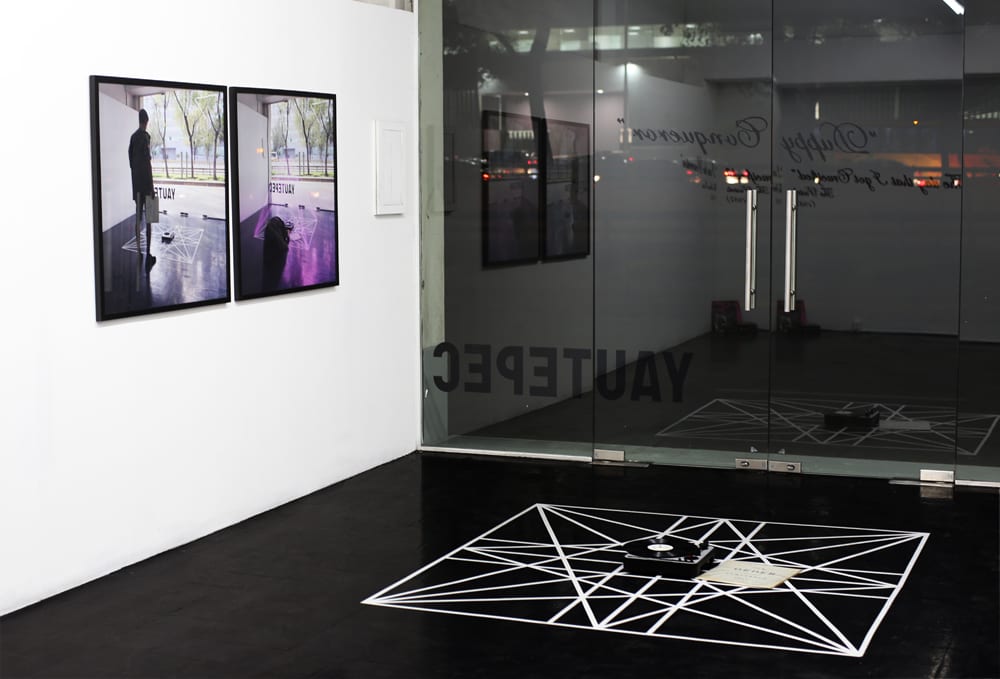
In Bizarre Love Triangle, the newest in my Theurgy series, we find The Praying Machine‘s immaterial counterpart in which the presence of The Praying Machine can only be manifested magically as New Order’s Substance LP spins on the central turntable.
This work is an ethereal mirror against the physicality (and the value) of The Praying Machine. In BLT, I invite the spectator into this kind of situationist faith exercise, to perceive “the essence” of The Praying Machine — some sort of, “your own personal Jesus.”
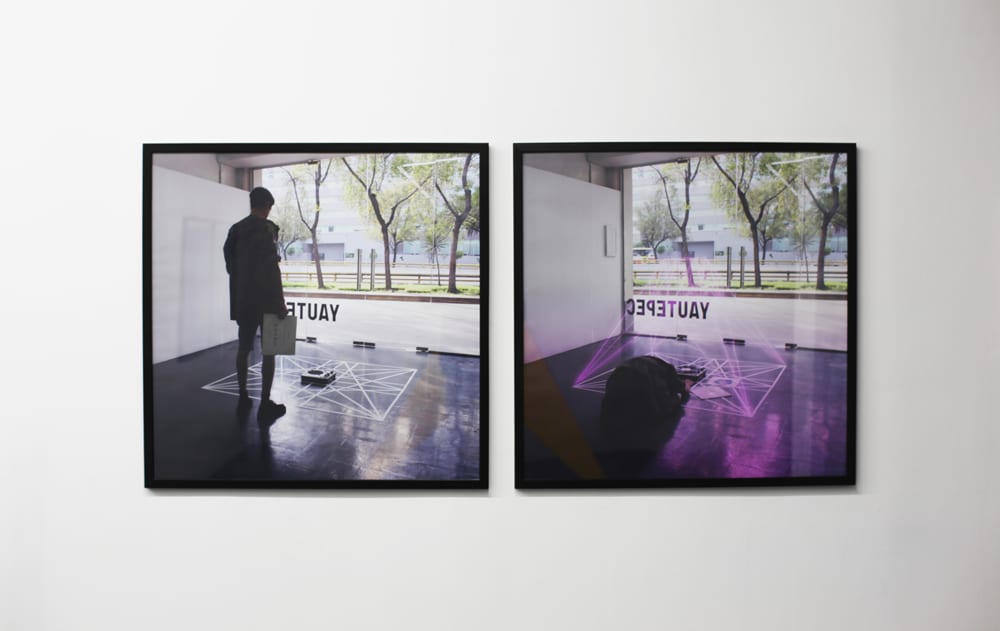
Magick Dance was another work in the same Theurgy series, which consists in the documentation of my own pop magick rituals, always referring to a particular artist and a record. In this case David Bowie’s Magic Dance (1986) plays repeatedly, sitting next to a vinyl diagram on the floor depicting the Kabbalah ‘Tree of Life’ sigil retraced as dance steps. With this I suggested that gnosis is only a receptacle, and that it can be fully activated only by human beings and their will. The most interesting gnostic discussion on Moses parting the Red Sea is that the three chapters of the Old Testament that refer to it in Hebrew (Exodus 14:19, 14:20, and 14:21) each consists of exactly 72 letters. They proclaim that the angel and God stepped aside, so it was Moses alone with the ultimate spiritual tool given to him — the 72 letters of the name of God — who opened the sea, and not God, as it reads in exodus 14:15th: “The Lord said to Moses: Why are you crying out to me?”
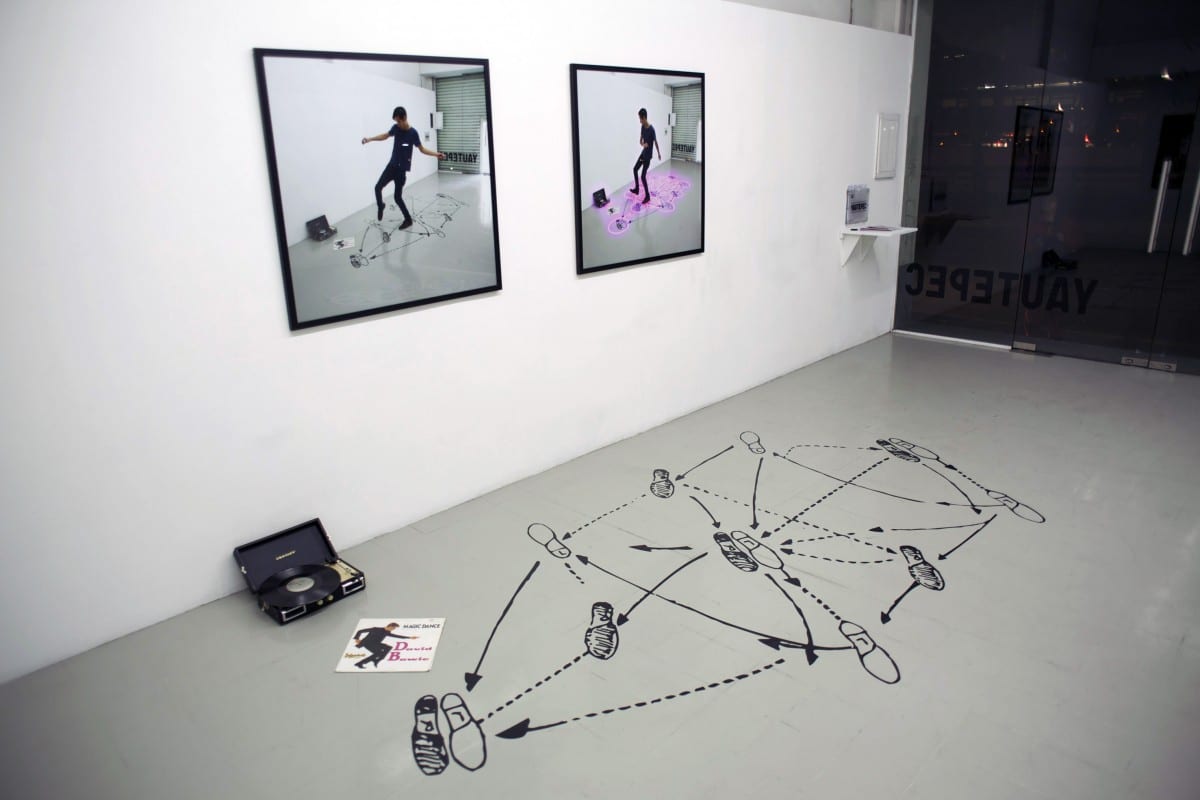
Magick Dance celebrates this, as it says in Thus Spoke Zarathustra, “I would only believe in a God that knows how to dance.”


Reverence (inspired by the Jesus & Mary Chain song of the same title) is a photographic diptych of the statue of Giordano Bruno found in Mexico City’s Colonia Juarez and the plaque commemorating the visit of Haile Selassie I to Mexico found in the Plaza Etiopia subway station. I have a fascination for how the spiritual and the mystic worlds, both being something (arguably) ethereal and unscientific, have this perpetual play, even in modern society. Its still very unscientific and irrational that for example the European community, especially France, found that the only relevant reason for not allowing Turkey into the EU is their practice of a different religion. That same sort of intolerance landed Giordano Bruno in an eight-year inquisition trial, discussing if he was a saint or a demon for suggesting such modern ideas like the sun was but one of an infinite number of stars surrounded by an infinite number of other planets with intelligent life, each likely to have their own equivalent of Jesus Christ.
When this transcends into the public space of a not less gentile country like Mexico, it’s quite something to me. Haile Selassie I visited Mexico City in 1945 and the city government named a subway station “Ethiopia” after him. He was there in person when the station was opened. Ethiopia was the only African country never colonized and their royal lineage goes as far as the Queen of Sheba and King Solomon. Black Ethiopian Jews in Israel are the only black citizens in the history of civilization that have equal rights in a country, without an abolition of slavery movement or a civil right movement. The Oaxaca state in Mexico is the only state in the country where indigenous (gentile) is not a synonym of misery and abuse, Oaxaca was also the only country never fully colonized by the Spanish.
Over both of the photographs, the form of The Praying Machine is superimposed, suggesting a holy stature to the place. As a Reverence for both holy figures to me for their own sovereignty: Selassie as the Emperor of Ethiopia whom the Rastafari movement considers to have been the return of the messiah, and Bruno as the absolute Christian scientific and image.
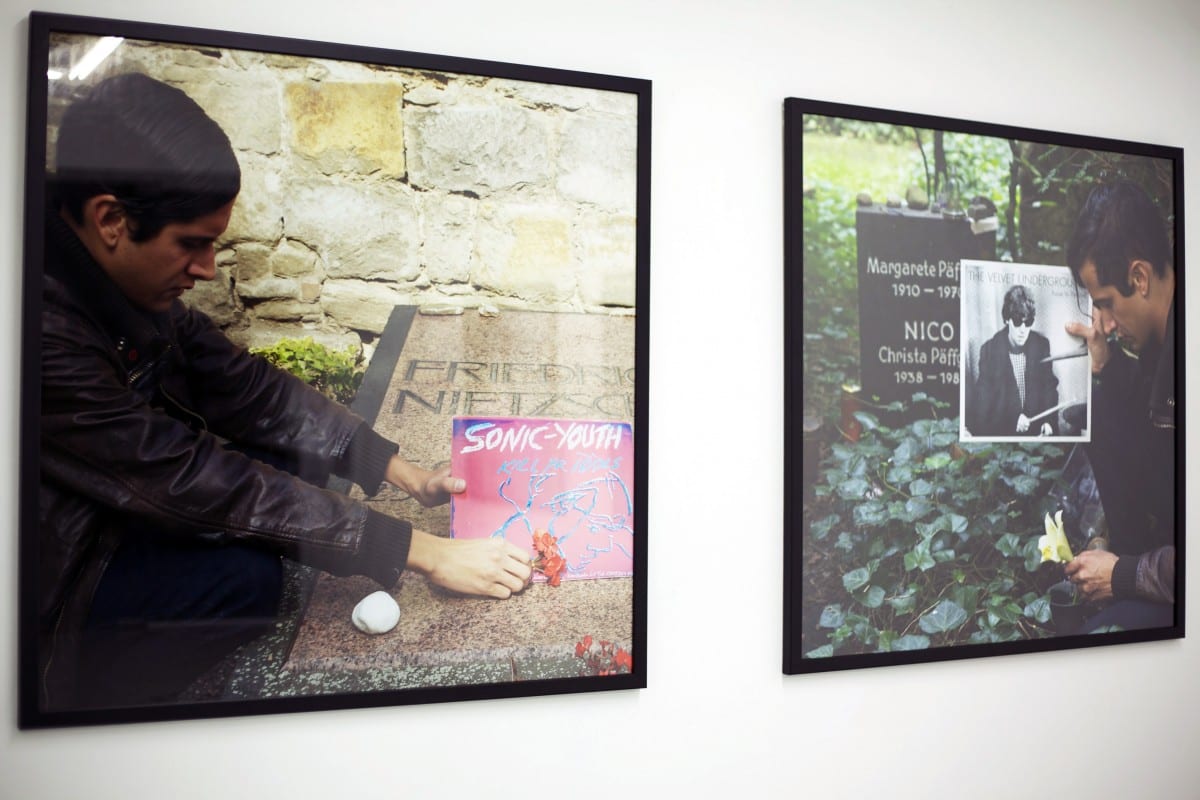
I try to identify rock ‘n’ roll as the active carrier between fandom and religious fanaticism, by placing in the epilogue in Hey Man / Amen, a diptych titled Nico and Nietzsche. During my residency in Leipzig, I went to place records as offerings on both of their tombs; Sonic Youth’s Kill Yr Idols (1983) on that of Nietzsche (the idol killer himself), while on Nico’s I put The Velvet Underground’s bootleg Praise Ye the Lord (1988) following the alchemist figure of the Opus Magnum of the Red Groom and The White Bride.
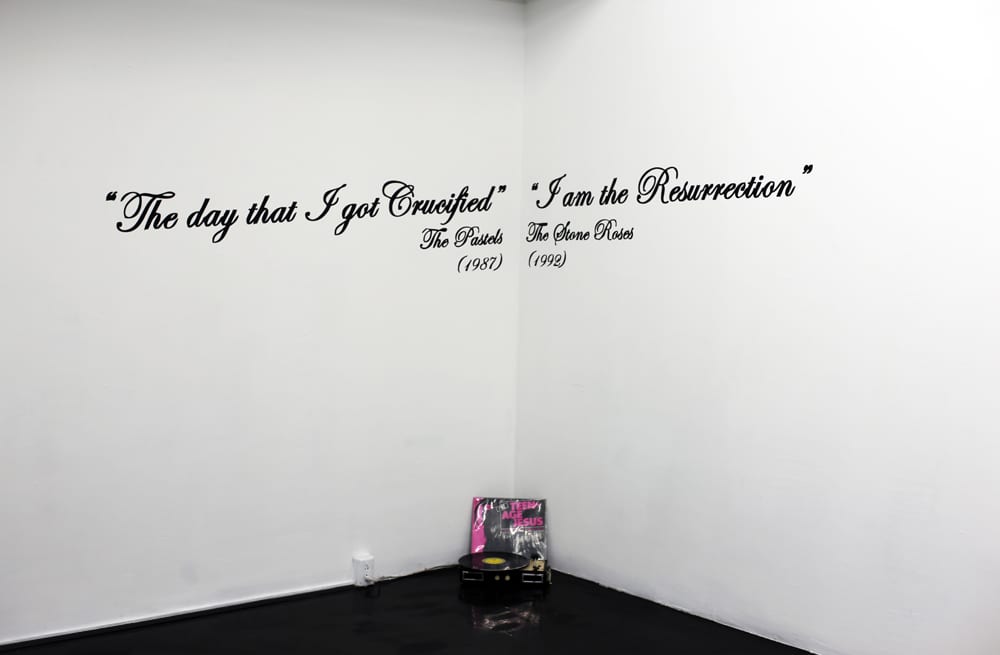
Teenage Jesus, belongs to the Crossroads series of corner installations in which I triangulate two song titles in wall-text with a selected loop of a certain record playing on the floor. Inspired by Robert Johnson’s infamous ritual, and also based on the “Third Mind” concept of Brion Gysin, the idea behind this series is to let one song unite two different others. In this case, I utilized The Day That I Got Crucified by The Pastels and I Am The Resurrection by the Stone Roses, while the album Pre Teenage Jesus by Teenage Jesus and the Jerks spins on the turntable.
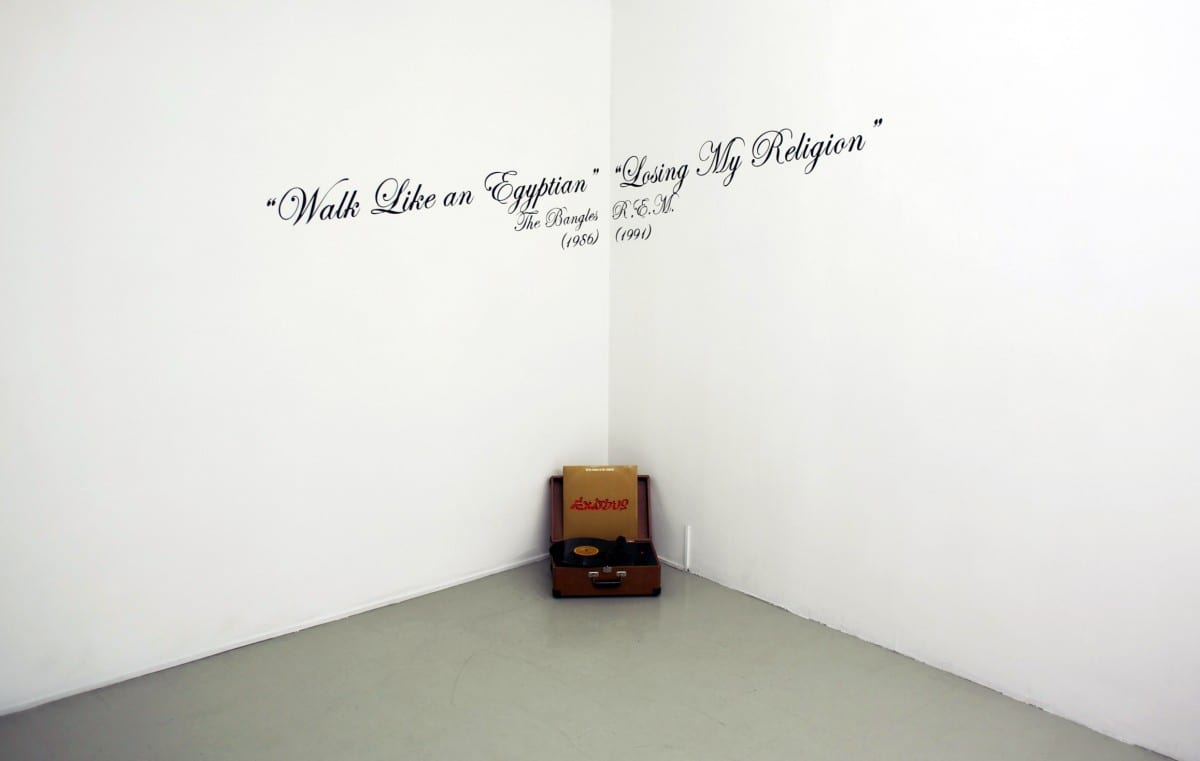
The Crossroads piece in Hey Man / Amen was titled Exodus and came to me after driving around one day in the city, when on the radio The Bangles Walk Like an Egyptian played right after REM’s Losing My Religion. It took me a while to realize the connection — the third mind and the magick dance — but then it came to me. Gnosis to Gnosis Ghost Cat!!
Featured image: Txema Novelo, The Praying Machine, 2013
All images ©of the artist and Yautepec Gallery
